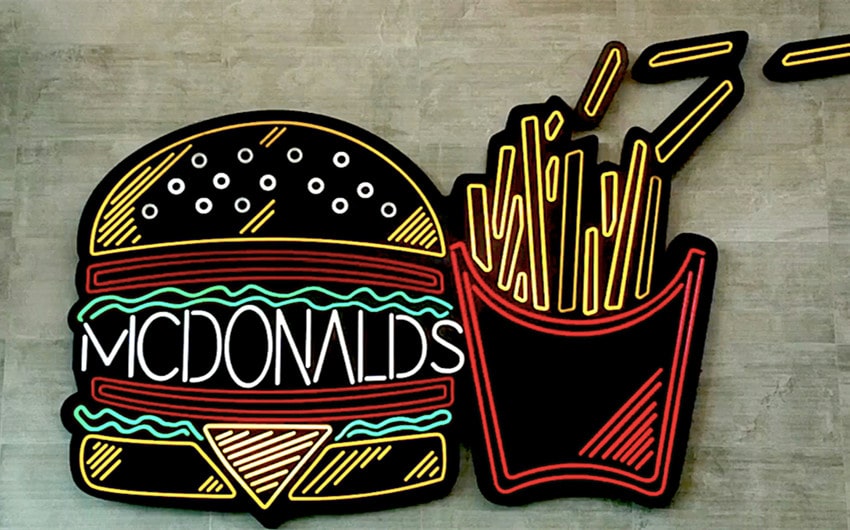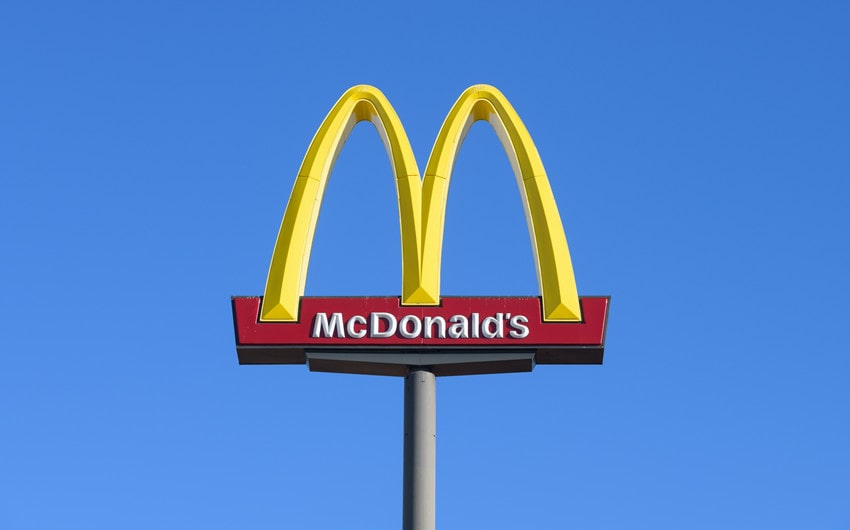Is McDonald’s Leaving California? What’s Really Happening
Lately, there’s been a lot of buzz about one big question: Is McDonald’s leaving California? With rumors swirling on social media and news outlets, it’s easy to wonder if the fast-food giant is planning to pull out of the Golden State. The short answer? No, McDonald’s isn’t leaving California. While the company may face challenges in operating within the state, there are no signs that it plans to close its doors anytime soon.
In this article, we’ll dive into where these rumors come from and what’s really happening with McDonald’s in California.
The Importance of McDonald’s in California
McDonald’s has a long and significant history in California, making the state an integral part of the company’s global operations. The fast-food chain, which was founded in 1940 in San Bernardino, California, by brothers Richard and Maurice McDonald, quickly became a staple of American dining culture. Although McDonald’s later expanded to become a worldwide brand, California holds a special place in its legacy, and today, it remains one of McDonald’s most crucial markets.
1. Economic Impact
With hundreds of locations across the state, McDonald’s plays an important role in California’s economy. Not only does it serve millions of customers daily, but it also provides thousands of jobs, both directly and indirectly. From restaurant crew members to management staff, McDonald’s employs a large workforce in California. Additionally, each franchise creates jobs in local communities, boosting small economies by supporting suppliers, delivery services, and maintenance workers.
2. Franchise Model and Local Businesses
A significant number of McDonald’s locations in California are run by franchisees. These franchise owners are local businesspeople who invest in the brand and operate the restaurants independently under McDonald’s larger corporate structure. This franchise model creates opportunities for local entrepreneurs, stimulating economic activity in cities and towns across California.
3. Cultural Influence
Beyond economics, McDonald’s has embedded itself in California’s culture. From its iconic golden arches to the introduction of drive-thru services that revolutionized fast food, McDonald’s helped shape how Californians — and, by extension, the world — experience quick-service dining. It’s more than just a restaurant; for many, it’s a part of daily life. Whether grabbing a quick coffee or indulging in a nostalgic Happy Meal, McDonald’s has become woven into the fabric of everyday California living.
With its deep ties to the state, it’s easy to see why rumors about McDonald’s leaving California would stir up concern. The fast-food chain isn’t just a business; for many, it represents a piece of California’s identity.

Why People Think McDonald’s Is Leaving California
Rumors about McDonald’s leaving California have gained traction recently, fueled by a variety of factors. While it’s easy to dismiss such rumors, there are a few legitimate reasons people might think McDonald’s is planning to exit the state. Here’s a closer look at what’s driving this speculation:
1. Rising Costs of Operation
One of the main reasons people believe McDonald’s might be leaving California is the rising cost of doing business in the state. California has some of the highest minimum wage laws in the country, as well as strict labor regulations that affect businesses, particularly in the fast-food industry. This can lead to higher operating expenses for McDonald’s franchisees, who may find it increasingly difficult to maintain profitability.
Additionally, California’s high taxes and real estate costs add further pressure to businesses, leading some to speculate that McDonald’s could look for more cost-effective markets.
2. Political and Regulatory Challenges
California has also been at the forefront of implementing new regulations aimed at industries like fast food. In recent years, there has been talk about increasing regulation on wages, workers’ rights, and food safety, which some have speculated could push McDonald’s out of the state. Proposals such as higher minimum wage requirements and stricter labor conditions have sparked conversations about whether major corporations, including McDonald’s, might reconsider their future in California.
For instance, in 2022, the state passed Assembly Bill 257, also known as the FAST Recovery Act, which sought to create a council to set wage standards for fast food workers. Though this law faced significant pushback and has yet to fully take effect, it contributed to the narrative that McDonald’s, and similar fast-food chains, may be forced to rethink their operations in the state due to increased regulatory burdens.
3. Corporate Decisions and Misinterpretation
McDonald’s has made various strategic business moves in recent years, such as closing some underperforming locations and shifting its focus to digital ordering and delivery services. These decisions are often part of larger corporate strategies but may be misinterpreted by the public as a sign that the company is planning to reduce its presence in California.
Additionally, McDonald’s previously moved its global headquarters from Illinois to a new office in Chicago, which fueled speculation that the company might be distancing itself from certain regions, including California.
Social media has also played a role in spreading the idea that McDonald’s could be leaving. Misinformation or out-of-context reports can quickly go viral, leading people to believe the fast-food giant is pulling out of the state, even though these claims may not be based on facts.
What McDonald’s Has Said About These Rumors
While the speculation about McDonald’s leaving California has sparked a lot of discussion, the company has not indicated any plans to exit the state. In fact, McDonald’s has addressed these rumors in various ways, offering reassurances to both employees and customers that California remains an important part of its business.
1. Official Statements
When rumors about McDonald’s leaving California started gaining attention, the company issued statements clarifying that these claims were untrue. McDonald’s emphasized that while the company continues to adapt to changing market conditions and challenges in the state, it has no plans to withdraw from California. The company has reiterated that its focus is on growing and maintaining its presence, not reducing it.
In a response to the rising concerns over regulations like the FAST Recovery Act, McDonald’s has highlighted its commitment to maintaining compliance with state laws while also advocating for a balanced approach to labor standards. McDonald’s CEO has publicly expressed the company’s stance on fair wages and working conditions, signaling that while challenges exist, the company is committed to staying engaged in California’s dynamic business environment.
2. Franchisees’ Reassurance
Many California franchise owners have also spoken up, stating that they have no plans to close down their locations. These franchisees, who operate independently, play a significant role in ensuring McDonald’s continues to thrive across the state. By reassuring their local communities, franchise owners are helping to dispel the rumors of McDonald’s leaving California. They have expressed confidence in their business models and in the state’s potential for continued growth, despite economic challenges.
3. Continued Investment in California
McDonald’s is also actively investing in its California locations. In recent years, the company has modernized many of its restaurants, adding digital kiosks, improving drive-thru systems, and enhancing mobile ordering options. These updates are part of McDonald’s broader strategy to stay competitive in an evolving market. Such investments suggest that McDonald’s is focused on the future in California, rather than planning an exit.

Factors Affecting McDonald’s Operations in California
Running a large-scale operation like McDonald’s in a state as complex as California comes with unique challenges. Although McDonald’s has a strong presence in the state, several factors have a significant impact on its day-to-day operations, long-term strategy, and profitability. Here are some of the key factors affecting McDonald’s operations in California:
1. Labor Costs and Regulations
One of the biggest challenges for McDonald’s in California is the state’s high labor costs. California’s minimum wage is among the highest in the country, with plans to increase it further in the coming years. As of 2024, the state’s minimum wage is set at $15.50 per hour for most businesses, with some cities like San Francisco and Los Angeles setting even higher minimum wage standards.
Additionally, California has strict labor regulations, including laws around meal breaks, overtime, and employee rights. For McDonald’s franchise owners, these labor costs can cut into profit margins, especially in regions where the cost of living is already high. For example, running a McDonald’s in San Francisco may be significantly more expensive than running one in a rural area of California, making it difficult for some franchisees to maintain profitability.
2. Environmental Regulations
California is known for its stringent environmental laws, many of which affect businesses like McDonald’s. The state has been leading the charge in reducing plastic waste, promoting sustainability, and encouraging the use of renewable energy. For McDonald’s, this means adapting to regulations that require them to reduce plastic usage (e.g., eliminating plastic straws) and adopt eco-friendly packaging.
These changes, while beneficial for the environment, also represent a financial burden for fast-food chains, as switching to biodegradable packaging or meeting the state’s recycling requirements often increases operational costs. Additionally, the state has goals for reducing carbon emissions, which could require further investments in energy-efficient technologies for McDonald’s restaurants across California.
3. Real Estate and Rent Prices
The cost of real estate and rent in California, particularly in urban areas like Los Angeles and the Bay Area, is another significant factor affecting McDonald’s operations. High rent prices make it expensive to lease property for new locations, and maintaining existing locations can also be costly. For franchise owners, balancing the high cost of rent with maintaining profitability can be difficult, particularly in competitive markets where there are other fast-food chains nearby.
Moreover, the real estate market in California is volatile, and commercial property prices can fluctuate drastically based on economic conditions. This makes long-term planning for McDonald’s locations a challenge, especially when securing leases for future development.
4. Health Trends and Consumer Preferences
California is often at the forefront of health-conscious trends, and this shift in consumer preferences directly affects fast-food chains like McDonald’s. Many Californians are increasingly opting for healthier, organic, and plant-based food options. While McDonald’s has made efforts to introduce healthier menu items, such as salads and fruit smoothies, it still faces pressure from consumers and local advocacy groups pushing for even more nutritious offerings.
Additionally, as more people become aware of the impact of fast food on public health, McDonald’s must continuously adapt its menu to meet changing demands. The rise in plant-based diets, for instance, has prompted McDonald’s to experiment with meatless burger options in select markets, including California.
5. Competition from Local and Regional Chains
California is home to several popular regional fast-food chains, such as In-N-Out, Jack in the Box, and Del Taco. These chains often emphasize fresh, locally sourced ingredients and appeal to consumers who are looking for alternatives to larger national chains. The strong presence of these competitors means McDonald’s faces stiff competition in California, especially in cities where these regional brands have a loyal following.
To stay competitive, McDonald’s has to differentiate itself through convenience (e.g., drive-thru service, mobile ordering) and affordability, while also experimenting with local menu items to appeal to Californian tastes. Despite the competition, McDonald’s extensive presence across the state and its brand recognition help it maintain a competitive edge.

The Future of McDonald’s in California
While there are undeniable challenges to operating in California, McDonald’s is committed to maintaining and even growing its presence in the state. Several key factors will shape McDonald’s future in California, including its ability to adapt to changing regulations, consumer preferences, and market conditions. Here’s a look at what the future may hold for McDonald’s in California:
1. Continued Emphasis on Sustainability
As California continues to push forward with environmental initiatives, McDonald’s will likely ramp up its efforts to become more sustainable. The company has already taken steps in this direction by reducing plastic use and experimenting with eco-friendly packaging, but more changes may be on the horizon. For instance, McDonald’s may expand its focus on renewable energy sources for its restaurants, invest in greener technologies like electric vehicle charging stations, and continue to prioritize sustainable sourcing of ingredients.
Sustainability is not just a regulatory issue; it’s also something that many Californian consumers value. By aligning itself with the state’s environmental goals, McDonald’s can strengthen its brand reputation among eco-conscious customers, particularly in cities like San Francisco and Los Angeles, where green initiatives are a significant part of the local culture.
2. Expansion of Digital Services
The future of McDonald’s in California will undoubtedly involve more digital integration. With the rise of mobile apps, online ordering, and delivery services, McDonald’s has already started making significant investments in its digital infrastructure. This is especially important in a tech-savvy state like California, where consumers expect seamless, technology-driven experiences.
McDonald’s will likely continue to invest in its mobile app, loyalty programs, and self-service kiosks to enhance convenience for its customers. Delivery services, through partnerships with apps like Uber Eats and DoorDash, are expected to remain a strong growth area, particularly in urban regions where delivery is a popular choice for busy consumers.
3. Adapting to Health-Conscious Trends
As more Californians opt for healthier food choices, McDonald’s will need to continue evolving its menu to cater to these preferences. The introduction of plant-based burgers, healthier side options, and transparency in nutritional information will likely become more prominent. McDonald’s may also explore adding more local and organic ingredients to its offerings to attract health-conscious consumers in California.
This shift toward healthier menu options will be essential for McDonald’s to stay relevant in a state where dietary trends often lead the nation. By continuing to adapt to these changes, McDonald’s can keep its customer base engaged while attracting new consumers who may have previously avoided fast food.
4. Navigating California’s Regulatory Landscape
McDonald’s future in California will also depend on how well it navigates the state’s complex regulatory landscape. As California continues to lead the way in labor laws, wage increases, and environmental policies, McDonald’s will need to find ways to operate efficiently while staying compliant. This might involve further automation, changes in employee benefits, and strategic partnerships to reduce costs.
While some regulations may make it harder for fast-food chains to operate in California, McDonald’s has the resources and experience to adapt to these changes. By staying ahead of regulatory shifts, McDonald’s can continue to thrive in California’s challenging business environment.
5. Expanding Franchise Opportunities
Another potential growth area for McDonald’s in California is the expansion of its franchise network. California’s diverse economy and large population present numerous opportunities for new franchisees to open additional locations, particularly in underserved or growing areas. McDonald’s may focus on opening more locations in suburban or rural parts of the state, where competition is less intense, and there is room for expansion.
By continuing to partner with local entrepreneurs and invest in franchise opportunities, McDonald’s can solidify its long-term presence in California. Franchisees play a crucial role in the company’s growth, and by supporting new franchises, McDonald’s ensures its continued success in the state.






